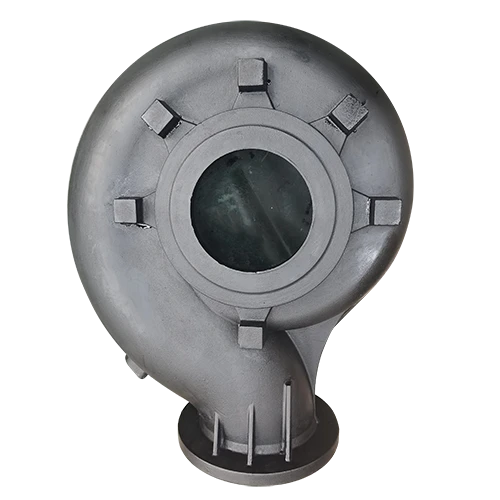Mobile:+86-311-808-126-83
Email:info@ydcastings.com
centrifugal casting stainless steel
The Art of Centrifugal Casting in Stainless Steel Production
Centrifugal casting, an innovative manufacturing process, has garnered significant attention in recent years, especially in the production of stainless steel components. This casting technique involves pouring molten metal into a rotating mold, utilizing centrifugal force to ensure uniform distribution and density of the material. Given the increasing demand for high-performance materials in various industries, understanding the intricacies of centrifugal casting in stainless steel fabrication is crucial.
Understanding the Process
The centrifugal casting process begins by creating a mold, typically made of high-quality steel or iron, which is designed to rotate around a vertical or horizontal axis. The choice of mold is paramount as it must withstand high temperatures and pressures without deforming. Once the mold is prepared, stainless steel, heated to its melting point, is poured into the mold as it spins. The centrifugal force generated by the rotation pushes the molten metal against the mold's interior walls, allowing for a denser and more uniform cast.
As the steel cools, the center of the casting solidifies first, while the outer layers remain molten longer, ensuring that impurities and non-metallic inclusions are expelled towards the center. This results in a defect-free outer surface and a high-quality product, making centrifugal casting an ideal choice for manufacturing critical components where strength and integrity are paramount.
Advantages of Centrifugal Casting for Stainless Steel
1. Uniform Quality One of the most significant benefits of centrifugal casting is the uniform quality of the final product. This method effectively reduces the likelihood of defects such as porosity and inclusions that often plague traditional casting methods. The forced movement of the molten steel ensures that heavier impurities sink to the center, enhancing the overall quality of the outer surface.
2. Better Mechanical Properties Components produced via centrifugal casting exhibit superior mechanical properties compared to those made using traditional methods. The rapid cooling rates and uniform density lead to enhanced tensile strength and corrosion resistance, making centrifugal cast stainless steel parts ideal for harsh environments.
3. Versatility in Designs Centrifugal casting allows for the production of complex shapes that may not be achievable with other forming techniques. This flexibility is particularly valuable for industries that require custom designs, such as marine, automotive, and aerospace sectors.
centrifugal casting stainless steel

4. Cost-Effective Production Although initial setup costs for centrifugal casting can be higher, the efficiency of the process often translates to cost savings in the long run. The reduction in material wastage, lower need for post-casting machining, and high production rates contribute to decreased overall production costs.
Applications of Centrifugal Casting in Stainless Steel
Centrifugal casting is extensively used in various applications requiring robust and corrosion-resistant materials. Typical uses include the production of pipe fittings, valves, pumps, and even components for chemical processing equipment. Additionally, its reliability and strength make it a sought-after choice in the oil and gas industry, where equipment must withstand extreme pressures and corrosive environments.
In the medical field, centrifugal casting is utilized for producing stainless steel components used in surgical instruments and implants. The high precision and biocompatibility of the centrifugal cast stainless steel make it ideal for applications where safety and performance are critical.
Challenges and Considerations
Despite its advantages, there are challenges associated with centrifugal casting. The need for precise control over mold temperatures and rotational speed is crucial to ensure consistent quality. Additionally, the initial investment in specialized equipment can be significant, posing a barrier for smaller manufacturers.
Furthermore, while the process is suitable for large-scale production, it may not be as cost-effective for small batches. Manufacturers must carefully evaluate their production needs and balance the benefits of centrifugal casting against its limitations.
Conclusion
Centrifugal casting is a formidable method for producing high-quality stainless steel components, offering unique benefits that enhance product performance and reliability. As industries continue to demand materials that can withstand rigorous conditions, the role of centrifugal casting will likely become even more significant, pushing the boundaries of what is achievable in materials engineering. By understanding the process and its advantages, manufacturers can leverage this technique to meet modern challenges in various sectors, ensuring a future filled with innovation and resilience in stainless steel production.
-
Why Should You Invest in Superior Pump Castings for Your Equipment?NewsJun.09,2025
-
Unlock Performance Potential with Stainless Impellers and Aluminum End CapsNewsJun.09,2025
-
Revolutionize Your Machinery with Superior Cast Iron and Aluminum ComponentsNewsJun.09,2025
-
Revolutionize Fluid Dynamics with Premium Pump ComponentsNewsJun.09,2025
-
Optimizing Industrial Systems with Essential Valve ComponentsNewsJun.09,2025
-
Elevate Grid Efficiency with High-Precision Power CastingsNewsJun.09,2025











